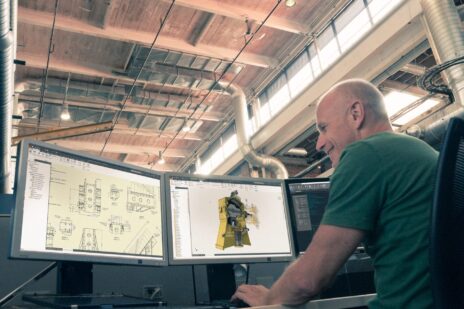As engineers, we always have to stay at the top of our game. Part of that arduous task means being the best Inventor user we can be. Sometimes, however, we don’t want to spend hours watching tutorials or learning how to do something new. That’s where we come in.
We’ve assembled seven tips and tricks that you may or may not know about that will help you improve how you use inventor and shave a little bit of time off of your design process. Most of the videos are under two minutes and you’re definitely going to learn something new. Find all seven tips and tricks below!
7. Simplify an Assembly to a Single Part
Need to share around an assembly without having to also share the individual part files? Then just convert the assembly into a single part file for simple sharing and quick editing. Inventor Luke will show you how.
6. Create a Matching Contoured Part
Need to create some form of casing or covering that follows an existing complex geometry? Try using this trick from JVH Engineering.
https://www.youtube.com/watch?v=7XJ9CrP0xV8
5. Making Sketching More Efficient
You spend a huge chunk of time sketching while using Inventor, so why not make it as efficient as possible? Utilizing some clever viewing presets, Inventor Luke will show you how in the video below.
4. Use the Repair Bodies Tool to Aide in Surface Stitching
If you’re working with surface data and need to find where there may be an open gap preventing stitching, then try using the repair bodies tool. In under a minute, the video below will show you how this can help.
3. Bolted Connections in Assemblies
Have you ever used the bolted connection command in the assembly environment? This video from JVH Engineering will teach you how.
https://www.youtube.com/watch?v=22j1IEqo18o
2. Trim with Non-planar Surface
Need to trim a component along a very specific non-linear path? Try trimming it with a surface.
1. Partial Chamfer
Inventor 2018 now allows you to create partial chamfers on not only straight edges, but also on curved and tangent edges. This allows you to create highly complex geometries with some fairly simple commands. Check it out in under a minute below.


